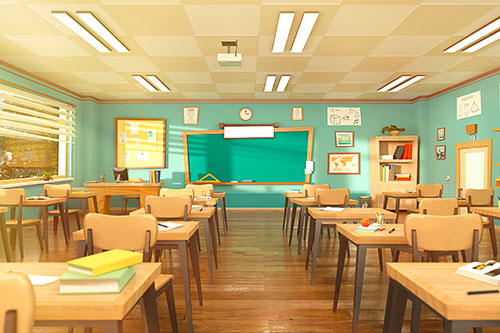
Inclusive classrooms are where all learners, with and without disabilities, are placed in general education programs according to their age in locality schools. The objective is to give them high-quality instruction, supports, and interventions, empowering them to accomplish success in the core syllabi.
The fundamental functioning of such classrooms and schools is based on the principle that learners with disabilities are as abled as learners without disabilities. Hence, all students can completely participate in the neighborhood school community and their classrooms.
Much of the inclusive education movement is based on the principle that learners should be allowed to access the least restrictive setting to learn. It means that your child with ASD or any other health condition will be placed with other students without disabilities to learn.
Effective inclusive education is based on acceptance, understanding, along with attending to diversities and differences among learners, including their cognitive, physical, social, academic, and emotional aspects.
The essence of inclusive education lies in making all learners feel invited, suitably challenged, and guided in their attempts. It is equally imperative that the key adult stakeholders, such as instructors and parents, receive appropriate assistance and guidance.
Studies suggest that learners without and with disabilities learn more in inclusive classrooms. For learners with disabilities, access to inclusive education results in academic improvements in social studies, mathematics, and literacy; increased number of friendships; better social skills; and improved communicative abilities. In some cases, the student with ASD may require the support of school personnel, such as an Autism Coach, to facilitate social and emotional connections within the classroom environment.
In general, when placed in an inclusive education-based classroom, your child with ASD or any other disability will be equipped with improved self-conceptualization, exhibit an increased liking for the school and its teachers, and be inspired to learn and work.
In many cases, it is possible for students with autism to start their education in a self-contained classroom with a smaller ratio of students to teachers and additional structure, and be moved into an inclusive setting with their general education peers. This transition would come as a team decision by the student’s school support personnel and parents. The goals of the student’s IEP or Individualized Education Plan would need to indicate that the student is showing growth and mastery in areas of academic, social emotional, independent functioning and communication and would thrive in a less restricted school environment.
At CASE, we work to ensure that children with Autism Spectrum Disorder or ASD are able to experience a greater degree of independence. We carry out research-driven knowledge sharing among the communities of the United States and the Caribbean.
Schedule a consult today or request a call-back now for more information.